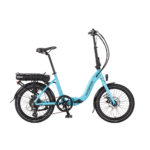A couple of recent posts have caused me to consider, what is a battery guarantee?
Some battery guarantees are quite measly, only lasting a few days, whilst other appear to be very generous, boasting 2 years. But what are they guaranteeing?
To the layman, lacking the rich knowledge of some of the members here, what do they believe they are getting when they purchase a battery? For example, one might be tempted by a battery boasting X Amp hours guaranteed for Y months in contrast to a battery offering X Amp hours, but for only Y/4 months.
From the table kindly supplied by Flecc via The Battery University, one brand of battery, if used within manufacturer’s guide lines, can be expected to lose a minimum of 30% of its capacity in two years, quite possibly possibly even more.
What would you expect from the various manufacturers and / or retailers if you presented your battery to them displaying a 30% reduction in capacity towards the end of its warranty period?
Bearing in mind, if the battery is sold with a tempting X Amp hours guaranteed for Y months, should it still be able to deliver this within the warranty period? To coin a phrase, I think that, “the man on the Clapham Omnibus”, would expect just that. If battery deterioration is known about only by a select few, (manufacturers and a few people with specialist knowledge) should the warranty be boasted in slightly less flamboyant terms? For example, X Amp hours guaranteed to deliver X *(0.66) Amp hours over Y months? (Sorry for the X and Ys, I am trying to be non brand specific)
Unless a manufacturer / retailer is prepared to exchange a battery exhibiting less than the advertised capacity at ANY time during the warranty period, then I think that the guarantees are mis-leading and should be amended. We don’t accept this with other products, so why should bike batteries be any different? In fact, my iPhone carries a guarantee to the following effect. A less than 50% degradation in battery capacity during the warranty period will not be considered in terms of a warranty claim. This may be disappointing, but at least it is made known in the iPhone literature.
To me, with the current situation, a 90 day guarantee may be just as good as a 2 year one. It could be that the manufacturer giving the 90 day guarantee is just being more realistic?
I have no particular beef with anyone over this issue, but I think that it needs to be made clear to existing owners and to prospective new owners EXACTLY what a battery guarantee is. I think that it is all too woolly at the moment and could lead to disappointment and a tarnished image of ebikes. I also hope that this post will stimulate some debate and opinions on the matter.
Could the retailers / manufacturers set out some parameters in terms of battery capacity degradation that they would accept for a warranty claim?
Some battery guarantees are quite measly, only lasting a few days, whilst other appear to be very generous, boasting 2 years. But what are they guaranteeing?
To the layman, lacking the rich knowledge of some of the members here, what do they believe they are getting when they purchase a battery? For example, one might be tempted by a battery boasting X Amp hours guaranteed for Y months in contrast to a battery offering X Amp hours, but for only Y/4 months.
From the table kindly supplied by Flecc via The Battery University, one brand of battery, if used within manufacturer’s guide lines, can be expected to lose a minimum of 30% of its capacity in two years, quite possibly possibly even more.
What would you expect from the various manufacturers and / or retailers if you presented your battery to them displaying a 30% reduction in capacity towards the end of its warranty period?
Bearing in mind, if the battery is sold with a tempting X Amp hours guaranteed for Y months, should it still be able to deliver this within the warranty period? To coin a phrase, I think that, “the man on the Clapham Omnibus”, would expect just that. If battery deterioration is known about only by a select few, (manufacturers and a few people with specialist knowledge) should the warranty be boasted in slightly less flamboyant terms? For example, X Amp hours guaranteed to deliver X *(0.66) Amp hours over Y months? (Sorry for the X and Ys, I am trying to be non brand specific)
Unless a manufacturer / retailer is prepared to exchange a battery exhibiting less than the advertised capacity at ANY time during the warranty period, then I think that the guarantees are mis-leading and should be amended. We don’t accept this with other products, so why should bike batteries be any different? In fact, my iPhone carries a guarantee to the following effect. A less than 50% degradation in battery capacity during the warranty period will not be considered in terms of a warranty claim. This may be disappointing, but at least it is made known in the iPhone literature.
To me, with the current situation, a 90 day guarantee may be just as good as a 2 year one. It could be that the manufacturer giving the 90 day guarantee is just being more realistic?
I have no particular beef with anyone over this issue, but I think that it needs to be made clear to existing owners and to prospective new owners EXACTLY what a battery guarantee is. I think that it is all too woolly at the moment and could lead to disappointment and a tarnished image of ebikes. I also hope that this post will stimulate some debate and opinions on the matter.
Could the retailers / manufacturers set out some parameters in terms of battery capacity degradation that they would accept for a warranty claim?






